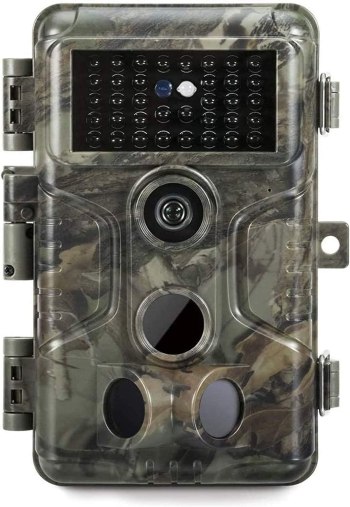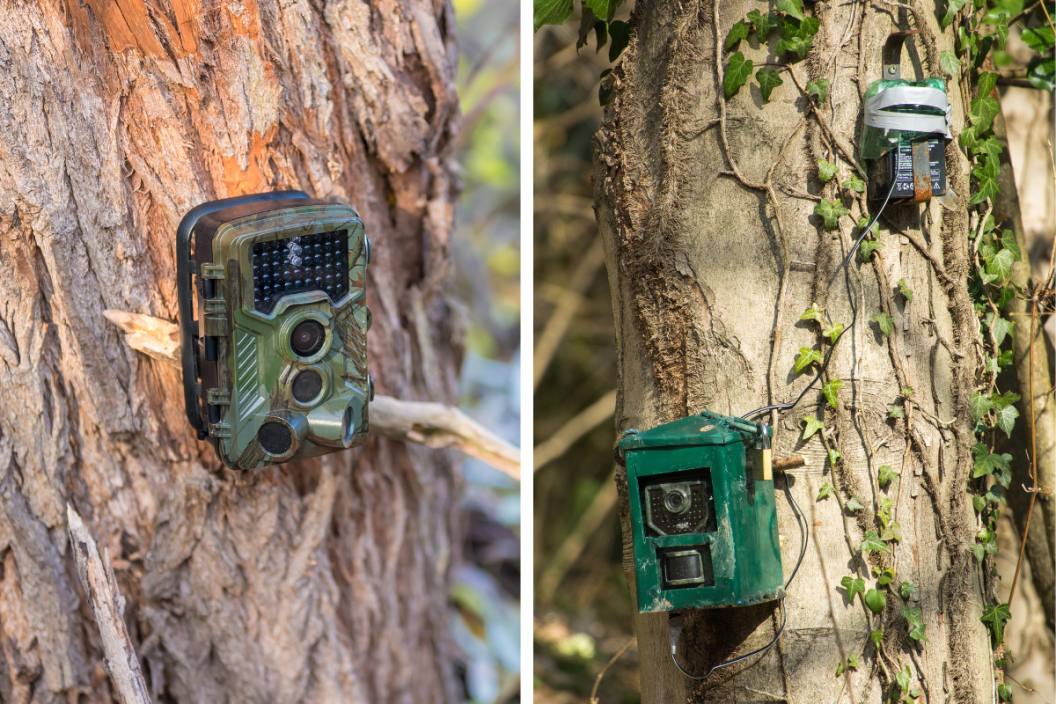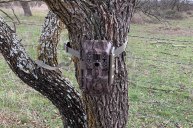Perhaps one of the greatest inventions for hunters is the trail camera. Long gone are the days when hunters relied solely on deer signs in the woods and made educated guesses on where the deer were moving. For decades now, deer hunters have monitored deer activity through trail cameras, pinpointing exactly where and when their deer herd is active. Yet, with advanced, 21st century technology, a new question has arisen: should hunters use wireless or cellular trail cameras?
If you have been hunting long enough, you have witnessed firsthand the drastic improvements made to the capabilities of these trail cameras. I can still remember when the average trail camera was about the size of a shoebox and the weight of a brick. My dad has reflected on even earlier times when trail cameras operated on 35mm film strips. We have come a long way, and now it looks like wireless and cellular cameras are the newest innovation in the trail camera market.
Does that mean standard trail cameras a thing of the past, or is there still room for them in an increasingly connected world? And what ethical or fair chase questions come into play with cellular and wireless cams? Here are a few facts that will help you determine what to use and why.
Cellular Trail Cams: Pros and Cons
Cellular cameras have changed most people's hunting strategies for the better. Through the purchase of a data plan, hunters can now receive pictures from their trail cam directly to their phone without entering the woods and swapping an SD card. Essentially every trail camera manufacturer offers several models of cellular cameras, most of which feature an app that will give the hunter a fundamental or in-depth analysis of the camera's activity.
There is an obvious advantage to using cellular trail cameras, and not just because it is addicting having the camera send pictures directly to your phone (although that part is pretty awesome). The most obvious and significant advantage is that you can go into the woods once, find a spot with heavy deer traffic, place your camera, and scout remotely without disturbing the property again. We all know it only takes one slip up to bump a mature buck, and he could leave the property forever. With cellular cameras, you can pattern your target buck from your couch, and you'll only ever have to go on the property when conditions are right to hunt him.
Another advantage of using cellular cameras is if you have a property far away from your home. I hunt several properties that would be impossible for me to get out to weekly to pull SD cards. With cell cams, I can set a few out in the summer and likely won't have to revisit them until I'm ready to hunt or the batteries have died.
While I believe that the pros of using cell cameras outweigh the cons, there are a few drawbacks. One of the most significant drawbacks is the cost. For cell cams to promptly send you pictures, you have to subscribe to a network plan, such as Verizon or AT&T. Some camera manufacturers will even give you a nice discount when you bundle multiple cameras. However, you're still likely to shell out $10 a month per camera in perpetuity.
Another con is that they drain batteries far more quickly than standard cameras. Depending on your deer density and where your cameras are located, you can likely get an entire season out of one set of batteries in a standard trail camera. Whereas with a cell camera, you'll probably have to replace them several times over a couple months. Lithium batteries are a great solution to this problem and will cut your battery replacement trips by about half. But still, any time you're going into a buck's area to replace batteries, you're running the risk of him spotting you and nullifying the best part of the cellular cam.
Finally, the ethics of cameras that can instantly send you the whereabouts and activity of a game animal begin to get a bit fuzzy. If you believe in true fair chase, this begins to approach the line of acceptable hunting practices. Some would argue that if the technology's present, why not use it? Others would say it's farther away from the true essence of tracking and hunting. Where you stand on it is ultimately your choice, but there is something about the laziness involved in waiting for an image to zoom through space and arrive as an alert on your phone. I like to think I still work extremely hard leading up to and during hunting season, despite whatever advantages a cell cam can provide. To each their own, I guess.

Sportsman's Warehouse
Tactacam Reveal XB Cellular Camera - Sportsman's Warehouse, $119.00
Standard Trail Cameras: Pros and Cons

PlazacCameraman via Getty Images
Standard trail cameras operate by saving photos to an SD card, which you will have to physically retrieve to see the pictures. This is a viable option for someone with a property nearby that can easily sneak in and out and remain completely undetected. Manufacturers still make standard trail cameras, and I still utilize them on some farms I hunt.
The positives shine brightly with these types of cams. Standard trail cameras generally have higher picture quality since they are formatted directly onto the SD card without requiring a network to send. It can be frustrating when all you get is a grainy picture of your target buck, and the standard trail cameras still reign supreme as far as picture quality goes. The cost of ownership is also much lower for standard trail cameras since you don't need to subscribe to a network plan to get your pictures. Essentially your only costs are the price of the camera, the SD card, and the occasional battery changes.
The battery life on standard trail cameras is much higher than that of a cellular camera, and let's be honest, batteries aren't cheap. Even during the brutal temperatures of winter, my standard trail cameras can last on a single set of lithium batteries.

Amazon
GardePro A3 Trail Camera - Amazon, $69.99
Is There a Clear Winner?
Cellular and standard trail cameras can be worked in almost every hunter's strategy. During the offseason, when pressure isn't quite as crucial, I definitely enjoy physically walking on my property to pull SD cards. You get a certain suspenseful optimism by checking each SD card you don't experience with cell cameras. And I feel like I can conduct these checks without disturbing my chances at harvest come fall.
However, during the rut, when a cruising buck may only stay on your property for a couple of days, you should be getting real-time intel on activity. You just can't beat cellular cameras in that category.
Ultimately, I suggest hunters balance the traits of cellular and standard trail cameras, and not write one off as instantly better or worse. As each new hunting situation arises it could call for one or the other, and keeping an open-but-informed mind can only help your odds of success.






